Introduction: Unraveling the Myths of AI in the Classroom
Imagine stepping into a classroom where your teacher isn’t just a person but also an intelligent machine that helps you write stories, solve math problems, and learn new things in fun and exciting ways.
Sounds like a scene from a sci-fi movie, right? Well, it’s becoming more real than ever, thanks to Artificial Intelligence (AI)!
But hold on! Before we dive into this futuristic world, there are a few spooky stories and misunderstandings floating around about AI in classrooms. Some say it’s like having a robot take over the teacher’s job , while others think it’s just a fancy tool that makes learning too easy.
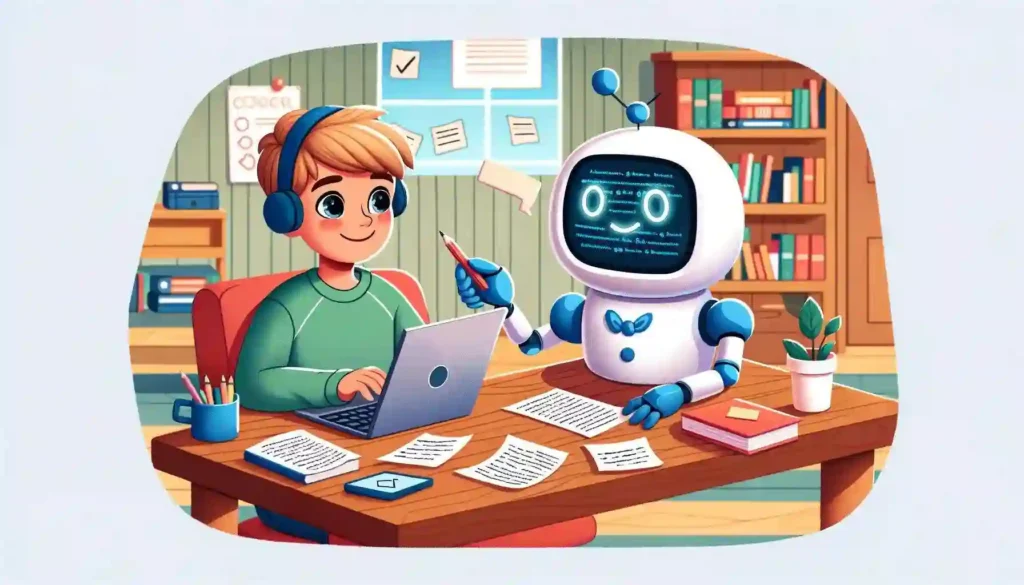
But guess what? Most of these stories are just myths—like the boogeyman under your bed!
In this blog, we’re going on a myth-busting adventure to uncover the truth about AI in education.
We’ll explore how AI is really used in classrooms and how it can be a powerful ally in making learning more engaging, personalized, and, dare we say, fun! So, grab your detective hat 🕵️♂️, and let’s debunk some myths together.
By the end, you’ll see AI not as a scary robot but as a friendly helper in your learning journey. Let’s get started!
Myth 1: AI’s Impact on Writing Skills
In today’s classrooms, the introduction of Artificial Intelligence (AI) tools has sparked a significant debate, particularly regarding their impact on developing writing skills.
A common myth is that AI tools, like Grammarly and spellcheck features, could deter the learning process by making everything too easy for students.
However, this fear overlooks the real potential of AI as a supportive tool rather than a replacement for human effort and creativity.
Let’s set the record straight: AI tools are akin to advanced spell checks or calculators. They’re designed to assist, not to take over the learning process.
For instance, Grammarly doesn’t just correct spelling or grammatical errors; it also offers explanations and suggestions that help users understand their mistakes and learn from them.
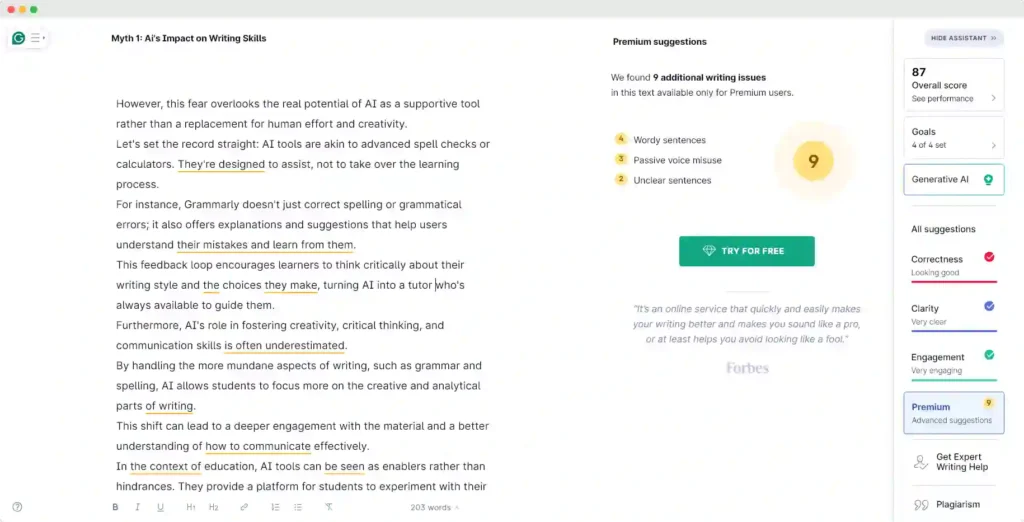
This feedback loop encourages learners to think critically about their writing style and the choices they make, turning AI into a tutor that’s always available to guide them.
Furthermore, AI’s role in fostering creativity, critical thinking, and communication skills is often underestimated.
By handling the more mundane aspects of writing, such as grammar and spelling, AI allows students to focus more on the creative and analytical parts of writing.
This shift can lead to a deeper engagement with the material and a better understanding of how to communicate effectively.
In the context of education, AI tools can be seen as enablers rather than hindrances. They provide a platform for students to experiment with their writing, receive instant feedback, and thereby improve their skills in a supportive and interactive environment.
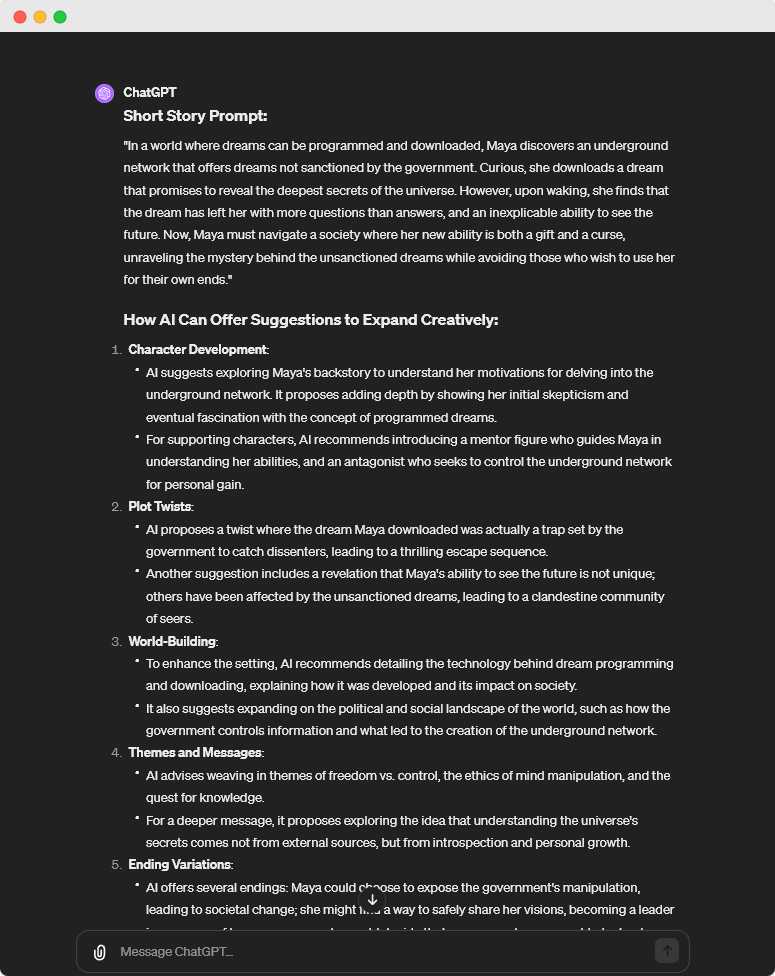
The goal is not to make writing “too easy,” but to make it more accessible and engaging, allowing students to explore their potential without being bogged down by the fear of making mistakes.
In conclusion, the myth that AI negatively impacts writing skills is based on a misunderstanding of how these tools are used and their potential benefits.
Instead of viewing AI as a threat to educational integrity, it should be seen as a valuable addition to the classroom, offering students the chance to enhance their writing skills in ways that were not possible before.
Myth 2: AI as a Passing Trend
As we navigate through the technological marvels of the 21st century, one myth stands out particularly: the notion of Artificial Intelligence (AI) in education as merely a fleeting craze, soon to be replaced by the next big thing.
This perception could not be further from the truth. The integration of AI in educational settings is not just a temporary experiment; it’s a fundamental shift in how we approach teaching and learning.
To put this into perspective, let’s draw an analogy to the transition from horses to cars. Initially, automobiles were seen as an extravagant luxury, beyond the reach of the average person, and not necessary for everyday life.
However, as cars became more accessible and their advantages clear, they gradually became an integral part of society, transforming how we live, work, and interact.
Similarly, AI in education is moving from being a novel idea to a central element in the classroom, fundamentally altering the educational landscape.
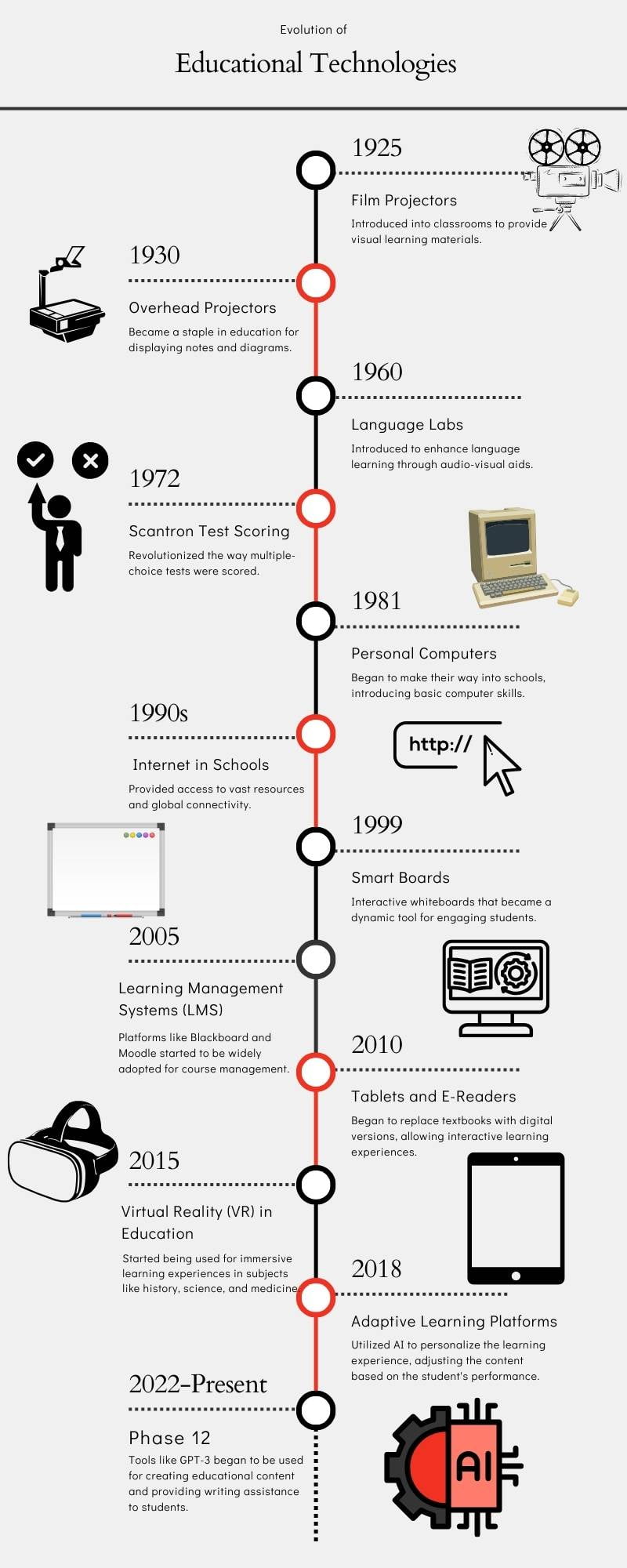
The ongoing development and expanding accessibility of AI tools are what are driving this transformation.
Just as cars evolved from simple, manually operated machines to complex, computerized systems, AI technology is becoming more sophisticated, user-friendly, and tailored to educational needs.
Today, AI tools can provide personalized learning experiences, adapt to individual students’ strengths and weaknesses, and offer real-time feedback, making the learning process more efficient and effective.
Moreover, the accessibility of AI tools in schools is improving. Initiatives to equip classrooms with the latest technology and to train teachers in utilizing AI effectively are becoming more common, ensuring that the benefits of AI are not limited to well-funded or private institutions.
This democratization of technology is crucial for preparing all students for a future where AI will play a significant role in many aspects of life.
In conclusion, the myth that AI in education is just a passing trend overlooks the profound and lasting impact that AI is set to have on the educational sector.
Just as the car reshaped society, AI is reshaping education, promising to make learning more engaging, personalized, and accessible for students worldwide.
The journey of integrating AI into education is an ongoing process, one that mirrors the continuous evolution of technology itself.
Myth 3: AI as the “Easy Way Out”
There’s a prevailing myth that Artificial Intelligence (AI) serves as the “easy way out” in education, simplifying tasks to the point where it diminishes the effort required to learn. This myth misconstrues the role and potential of AI in fostering both efficiency and creativity in real-world applications.
To debunk this myth, consider AI tools as the modern-day equivalents of calculators or word processors.
Just as these tools revolutionized how we perform calculations and create documents without undermining our understanding or skill, AI tools streamline and enhance the learning process.
They automate repetitive tasks, provide personalized learning paths, and free up time for creative and critical thinking.
For a real-world example, look no further than customer service. AI chatbots and automated service platforms are not replacing human interaction but are enhancing it.
They handle routine inquiries quickly and efficiently, allowing human agents to focus on more complex issues that require empathy, creativity, and critical thinking.
This not only increases problem-solving efficiency but also improves customer satisfaction by providing timely and accurate responses.
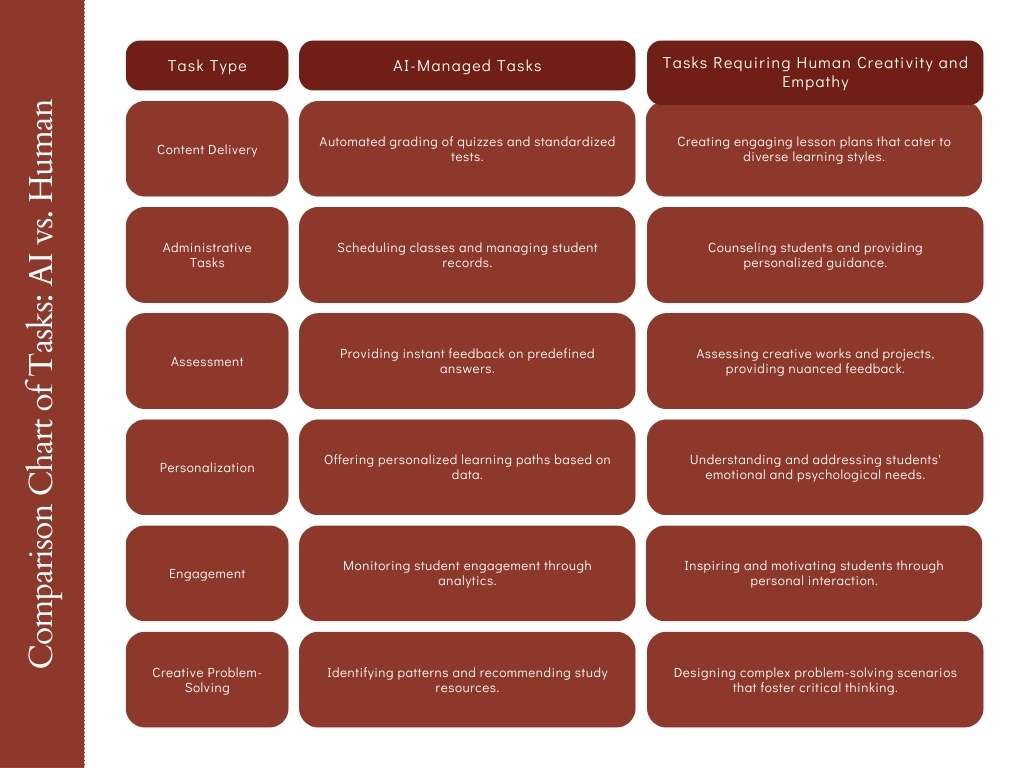
AI in education works similarly. By taking on routine and time-consuming tasks, AI allows students and educators to focus on the more meaningful aspects of learning, such as problem-solving, creative projects, and critical analysis.
This approach does not make learning “easier” in the sense of requiring less effort; rather, it makes learning more effective by ensuring that effort is directed toward higher-order thinking skills and creative endeavors.
In summary, the notion of AI as the “easy way out” is a myth that overlooks the real benefits of AI in education and beyond. AI tools, when used effectively, enhance efficiency, foster creativity, and prepare students for a future where they will work alongside AI in various capacities.
The goal is not to replace the effort required to learn but to optimize it, ensuring that students are equipped with the skills necessary to succeed in an increasingly complex and technologically advanced world.
Myth 4: AI and Plagiarism
One of the most contentious myths about the integration of Artificial Intelligence (AI) in education is its association with an increased risk of plagiarism.
This concern stems from the belief that AI tools could make it easier for students to generate content without fully understanding or crediting their sources, leading to a rise in unethical academic practices.
However, this myth fails to account for the educational opportunities AI presents in teaching responsible use and ethical content creation.
Reality Check: Teaching Responsible AI Use
The key to debunking this myth lies in educating students on how to use AI ethically. This includes knowing how to create prompts that produce original content, how to properly cite AI-generated content, and how to critically assess the data generated by AI.
Just as the academic community has developed guidelines for citing traditional sources, similar principles can be applied to AI-generated content, emphasizing the importance of intellectual honesty and integrity.
Strategies for Ethical AI Use
| Strategy | Description |
|---|---|
| Prompt Construction | Educate students on designing prompts that encourage the generation of original ideas and content rather than reproducing existing information. This skill not only mitigates plagiarism but also enhances critical thinking and creativity. |
| Citation | Teach students how to cite AI-generated content correctly. Students should learn to acknowledge when AI tools have inspired or aided ideas or text, maintaining transparency and academic honesty, just like they would when quoting a book or article. |
| Evaluation of AI Content | Instill the importance of critically evaluating AI-generated content. Students should be taught to assess the accuracy, relevance, and originality of the information, ensuring it aligns with academic standards and ethical practices. |
This table outlines the key strategies for ethical AI use in education, highlighting the importance of prompt construction, proper citation, and the critical evaluation of AI-generated content.
Fostering Media Literacy
In today’s information age, media literacy has become a crucial skill, enabling individuals to navigate the vast amounts of content available online.
By incorporating AI into the curriculum, educators can enhance students’ ability to discern credible sources, understand the ethical implications of content creation, and apply these principles in their academic work.
Teaching responsible AI use goes beyond preventing plagiarism; it prepares students for a future where AI is an integral part of the workforce and society.
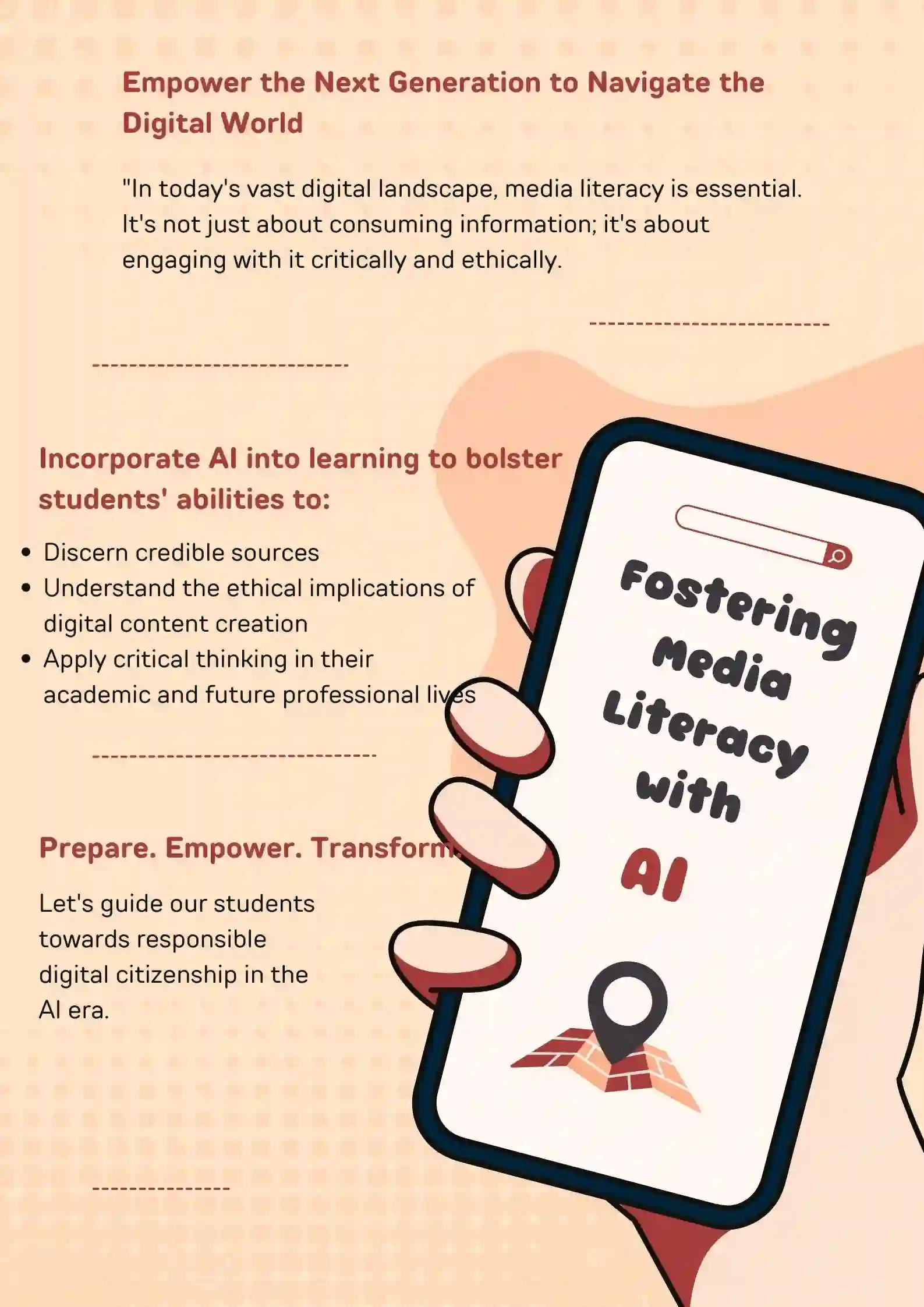
In conclusion, the myth that AI promotes plagiarism overlooks the educational potential of AI in fostering ethical, creative, and critical engagement with technology.
By focusing on responsible AI use, educators can equip students with the skills needed to navigate the complexities of the information age ethically and effectively.
Myth 5: AI’s Complexity for Young Children
A common misconception is that Artificial Intelligence (AI) is too complex for young children to grasp, implying that its introduction into early education might be premature or even unnecessary.
However, this perspective underestimates the capacity of young learners to interact with and learn from AI-enabled tools in ways that are both engaging and educational.
Reality Check: Age-appropriate AI Learning
The key to integrating AI into early education is to tailor the learning experience to be age-appropriate.
Children are naturally curious and capable of absorbing complex concepts when they are presented in a fun and interactive manner. Introducing AI through games, storytelling apps, and basic coding exercises can demystify the technology and make it accessible to young minds.
Games designed with AI can adapt to a child’s learning pace, offering challenges that are neither too easy nor too hard, thereby maintaining their interest and encouraging problem-solving skills.
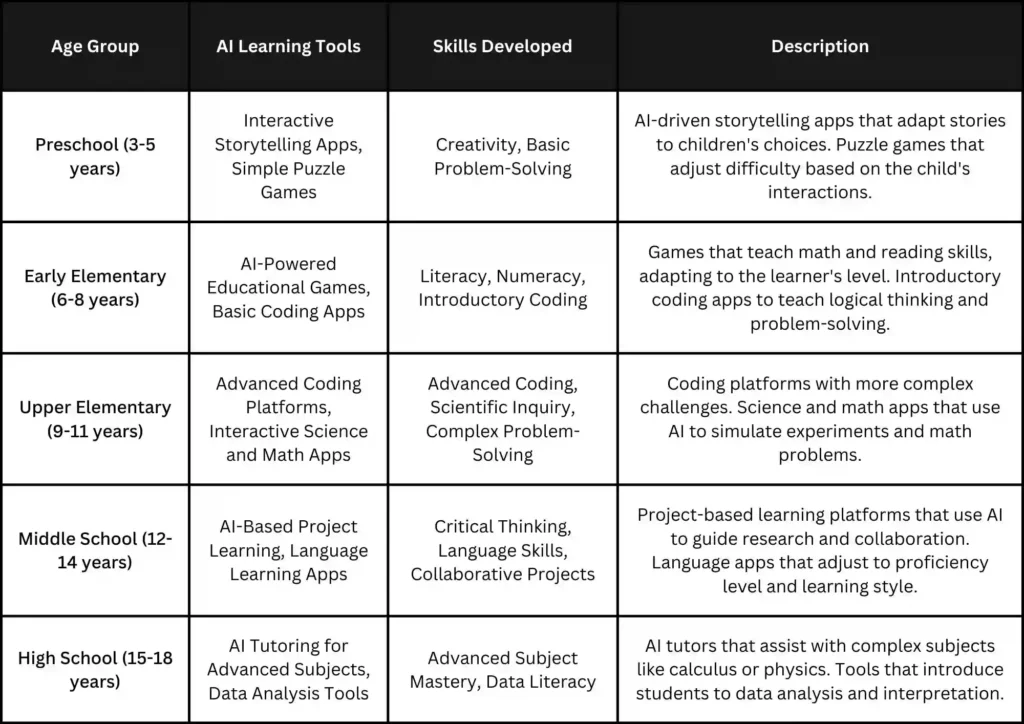
Storytelling apps can use AI to create personalized narratives that stimulate creativity and imagination.
Basic coding activities, meanwhile, introduce the logic behind AI in a simplified manner, laying the foundation for computational thinking.
Encouraging Curiosity and Problem-Solving
The goal is not to turn young children into AI experts but to foster a sense of curiosity about how technology works and how it can be used creatively.
By integrating AI into the learning experience in a thoughtful way, educators can encourage problem-solving skills and a positive attitude towards technology without overwhelming young minds.
This approach also prepares children for a future in which AI will be a ubiquitous part of life and work.
By familiarizing them with AI from an early age, we can ensure they grow up to be not just passive users of technology but informed and responsible digital citizens.
In conclusion, the myth that AI is too complex for young children overlooks the potential of age-appropriate AI learning.
With the right tools and approaches, AI can enhance the educational experience, making learning more engaging and relevant for the youngest learners.
Myth 6: AI Creating a Dehumanized Environment
A significant concern that often arises with the introduction of Artificial Intelligence (AI) into classrooms is the fear that it will create a dehumanized, impersonal learning environment.
This myth contends that as AI plays more prominent roles in education, the priceless human touch that teachers provide will decrease, creating a sterile and mechanical learning environment. However, the reality is quite the opposite.
Reality Check: AI Enhancing the Human Element in Education
The true potential of AI in education is not to replace teachers but to augment and enhance the human elements of teaching and learning.

By automating routine tasks such as grading and administrative paperwork, AI can free up teachers to spend more time on personalized instruction, developing deeper relationships with their students, and addressing individual learning needs.
AI Handling Routine Tasks
Imagine a world where teachers spend less time behind a desk, buried in paperwork, and more time engaging with students, facilitating group activities, and offering one-on-one support.
AI can make this a reality by handling the time-consuming tasks that often distract from the core mission of education: to teach, mentor, and inspire.
Using AI Collaboratively to Promote Communication and Teamwork
Moreover, AI can be used collaboratively to promote communication and teamwork among students.
Through AI-driven tools and platforms, students can work together on projects, share ideas, and learn from each other, all while developing important social and collaborative skills.
These interactive experiences emphasize the importance of human connection and teamwork, further enriching the learning environment.
In conclusion, the myth that AI creates a dehumanized environment in education overlooks the technology’s capacity to enhance the human aspects of teaching and learning.
By automating routine tasks and enabling more personalized and collaborative learning experiences, AI supports a more engaging and human-centric educational environment.
Far from replacing the human touch, AI amplifies it, ensuring that education remains a deeply personal and transformative experience for students.
Conclusion
Throughout this exploration, we’ve journeyed through the landscape of Artificial Intelligence (AI) in education, debunking six prevalent myths and revealing the realities beneath them.
Concerns about AI hurting writing skills or making the classroom less human are common myths that come from not understanding or not having enough information about how AI can be safely and effectively used in the classroom.
AI has the potential to personalize learning, improve efficiency, foster creativity, and prepare students for a future where digital literacy and AI knowledge are essential.
We hope to promote a more nuanced discussion about AI in education by dispelling these myths and emphasizing responsible use and the human element in technology-enhanced learning environments.
To ensure AI serves as a powerful ally in education, it’s crucial to approach its integration with a focus on complementing human instruction, not replacing it.
Educators play an irreplaceable role in guiding, inspiring, and mentoring students, with AI acting as a tool to amplify these efforts.
By embracing AI as a partner in the educational process, we can unlock new opportunities for learning, creativity, and growth, preparing students for the complexities of the future workplace.
Frequently Asked Questions
How does AI actually support students’ writing skills?
AI supports students’ writing skills by offering personalized feedback, identifying errors, suggesting improvements, and encouraging the development of critical thinking and creativity through tools like Grammarly and spellcheck.
Why is AI considered a necessary skill for future workplaces?
AI is considered essential for future workplaces due to its growing presence across industries, automating routine tasks, enhancing decision-making processes, and requiring new skill sets for workers to interact with AI-driven technologies effectively.
Can AI tools really improve work quality and creativity?
Yes, AI tools can improve work quality and creativity by automating mundane tasks, providing data-driven insights, and allowing individuals to focus on creative problem-solving and innovation.
How can educators effectively teach responsible AI use?
Educators can teach responsible AI use by incorporating lessons on ethical AI practices, critical evaluation of AI-generated content, and the importance of citing AI-assisted work, fostering a mindset of integrity and accountability.
In what ways can AI contribute to a more engaging learning environment?
AI contributes to a more engaging learning environment by personalizing education to fit individual student needs, facilitating interactive and immersive learning experiences, and supporting collaborative projects that encourage communication and teamwork.
Can AI predict future trends and help in academic research?
Yes, AI can predict future trends and aid in academic research by analyzing vast data sets to identify patterns and streamline processes, enhancing both the pace and quality of research.









Recent Comments